Distributed Energy Resources: Technology for Affordable, Resilient Power
Small, local generation sources help communities save money and address our growing energy needs

To help meet the ever-rising demand for energy in the U.S., policymakers, regulators, and utilities should look to distributed energy resources (DERs) as a bigger part of the solution. According to the Office of Energy Efficiency and Renewable Energy, DERs “are small, modular, energy generation and storage technologies that provide electric capacity or energy”—sources such as solar panels on roofs, batteries, electric vehicles, heat pumps, small wind turbines, and even smart thermostats. DERs, which are typically installed where the electricity is needed—a home, business, or industrial site—can lower energy costs, reduce pollution, and help communities keep the lights on during grid outages, among other benefits.
An increasingly distributed grid
Governments, utilities, and consumers are increasingly recognizing that conventional electricity generation—by large power plants from sources such as coal, natural gas, and nuclear power—is expensive and at times unreliable, due in part to pressure on the grid from the growing energy needs of homes, businesses, data centers, and more.
DERs are key to delivering, clean, affordable energy while giving consumers more say about where their energy comes from and how they use it. That’s a big reason DERs have become more popular around the world. Today, DERs provide 8% of the energy supply in Belgium and nearly 10% in Australia. In the U.S., they account for less than 5% of the energy supply, but experts expect that number to grow quickly. Wood Mackenzie, a global data and analytics firm specializing in energy and natural resources, estimates that the U.S. DERs capacity will increase by 216 gigawatts (GW) through 2028. This would help offset an expected increase in the country’s electricity needs, which is estimated to grow by 200 GW by 2030.
Figure 1
Examples of distributed energy resources
| Type of DER | Description | |
|---|---|---|
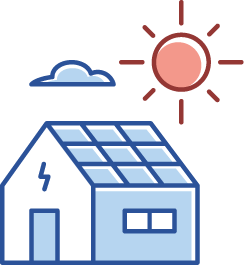 |
Photovoltaic (solar) panels | A series of panels installed on a rooftop or on the ground that generates electricity from sunlight. |
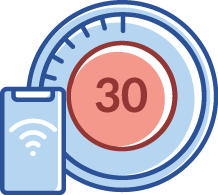 |
Smart appliances | Wi-Fi-enabled appliances that allow remote connection, control, and monitoring. |
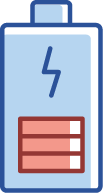 |
Energy storage | Technologies that store electricity from other energy sources for use when needed. They can be installed alone (and charge from the grid) or be colocated with an on-site generation resource. |
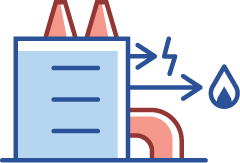 |
Combined heat and power systems | Integrated technologies that produce electricity and capture the heat typically lost during power generation to provide heating or cooling. This is also known as cogeneration. |
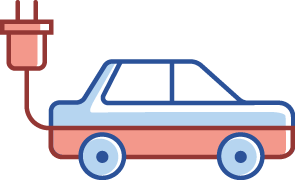 |
Electric vehicles | A vehicle that is powered by an electric motor that draws electricity from a battery, which can be charged externally. |
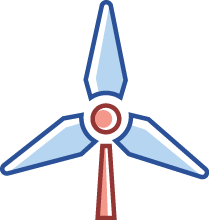 |
Wind turbines | Devices that leverage wind speed to spin a generator and produce electricity. |
Sources: U.S. Energy Information Administration, Solar Explained: Photovoltaics and Electricity, May 24, 2024; Silicon Labs, Smart Appliances: Enhancing the Connected Smart Home Experience; U.S. Energy Information Administration, Electricity Explained: Energy Storage for Electricity Generation, August 28, 2023; Department of Energy, Combined Heat and Power Basics; U.S. Department of Energy, Alternative Fuels Data Center: Electric Vehicle (Ev) Definition; National Renewable Energy Laboratory, Wind Energy Basics
How do DERs work?
Although traditional large power plants generate energy and transmit it through high-voltage lines that carry electricity over long distances (the transmission grid), DERs generate and deliver energy close to where it’s needed through the distribution grid (low-voltage electrical lines near homes and businesses). When demand is high, these DERs can help provide more energy to the entire grid or limit the amount of energy used.
Some DERs, such as rooftop solar panels, can be installed on the customer’s side of a utility’s electrical meter (“behind the meter”), directly offsetting their electricity use. Others that are installed “in front of the meter” are typically larger in scale and provide electricity and services directly to the grid.
DERs can be operated individually, be aggregated by grid operators as a “virtual power plant” (VPP) to help balance electricity supply and demand, or be grouped into microgrid systems that can operate independently from the larger grid, providing communities with greater resilience to extreme weather events.
The benefits of DERs
DERs can empower communities and customers to generate and manage their own energy, lower energy bills, increase grid reliability and flexibility, and reduce fossil fuel use, thereby lowering greenhouse gas emissions.
Lower customer costs
Electricity produced from DERs at customer sites, such as residential rooftop solar, offsets consumption of electricity from the centralized electric grid and can provide more efficient energy at lower cost. DERs also give customers a tool to shift their energy consumption from high-priced to lower-priced time periods—for example, by adjusting when smart appliances use power.
Further, many communities in the U.S. rely on aging electricity systems that will require expensive transmission and distribution upgrades—costs that are ultimately borne by customers. DERs can reduce those costs while meeting near-term energy demand. As more DERs come online, they can offset the need for utilities to upgrade or expand electricity systems, which in turn could free up capital for other clean energy investments.
Increase grid flexibility
Because DERs can quickly respond to energy demand fluctuations, they give grid operators, including utilities, an additional tool to manage an increasingly dynamic energy system. For example, through VPPs, a utility can call on a group of customers’ energy storage units to discharge electricity directly onto the grid when needed. In this way, DERs can reduce the strain on the grid, benefitting customers and grid operators.
Energy security and reliability
With a succession of extreme weather events—storms, floods, heatwaves, and cold snaps—continuing throughout the U.S., DERs can provide back-up power when grid service is interrupted. In February 2021, a winter storm in Texas knocked out power for nearly 10 million homes for days, underscoring the growing need for distributed power sources. When grid outages occur, distributed generation paired with energy storage can keep electricity flowing to homes, business, and communities.
Lower emissions
By increasing use of DERs that run completely on renewable energy, individuals and communities can reduce their reliance on fossil fuels and lower greenhouse gas and local air pollutant emissions—such as nitrogen dioxide and particulate matter—leading to healthier air.
Conclusion
DERs are diverse and flexible technologies that decentralize energy generation resources and can deliver affordable, reliable, clean energy for customers, communities, and grid operators. They are one clear answer to meeting the unprecedented increase in electricity demand the U.S. faces while ensuring universal access to clean energy resources.
Maureen Quinlan is a senior officer and Leah Ford is a senior associate with The Pew Charitable Trusts’ energy modernization project.













